Testing shoes and other types of footwear is important in ensuring product features, quality, usability, safety standards, and consumer expectations. This process results from systematic stress tests ranging from construction simulations to material selection. This blog explains the key focal points of assessment while explaining the footwear testing process for manufacturers. As a designer or even quality control expert, understanding these elastically adjustable factors can help increase product reliability and innovation. Let’s discuss the footwear testing process whereby comfort, functionality, and compliance/performance are balanced.
What are the Key Factors in Footwear Testing?

- Durability: Shoe preservation for the duration of time that it is used remains a persistent issue. This is managed using flex tests, tensile strength evaluation and abrasion tests.
- Comfort: Evaluation tests for comfort often use pressure maps and simulations in addition to conventional user tests to track fit, cushioning, and other supporting features.
- Slip Resistance: Assessment for important traits including traction for work and aerobics shoes is done on a variety of surfaces to verify their safety during use.
- Material Quality: Breathability, waterproofing, and wear resistance are among the factors that the materials used for the shoes need to be tested on
- Compliance and Safety Standards: Such footwear is subject to regulatory requirements like ASTM or ISO concerning safety features, materials used, and labeling.
Considering these aspects enables manufacturers to produce quality footwear that meets user expectations and complies with legal standards exhaustively.
How do shoe type and design impact testing?
A specific type of shoe influences the testing process; the sample type determines what sample-specific evaluation parameters and methods will be used. For example, athletic shoes are tested for traction, durability, and impact to high force impacts wear and tear. Work boots are also tested for slip-resistance and puncture resistance for Occupational Health and Safety (OHS) compliance due to their protective design for high-risk environments. Fashion shoes might focus more on comfort, ease of wear, and how the shoe retains its shape and appearance over time.
Like carbon fiber and foam, innovative designs require additional tests to check the fundamentals for structure and function. Features such as embedded sensors or customized fit technologies change the standard benchmarks for electronic validation and fit precision verification. As a result, the type and design of the shoe dictates the testing procedure, while pre-defined regulatory criteria and steps assure that both expectations set by the end-user and regulatory frameworks are precisely met.
What role does material quality play in footwear performance?
The specific types of materials used in a shoe greatly determine comfort and durability, and the effectiveness of the footwear. While the shoe is being worn, high-grade materials, like premium coated leathers, advanced engineered textiles, and modern synthetic composites boost endurance and reduce weariness. Skechers shoes, for instance, incorporate thermoplastic polyurethane, which provides decline during use, fading out thick burns to itself and an increase in energy return. Also, specific lightweight fabrics like meshes improve overall breathability, heat and moisture build-up is greatly minimized.
Aside from personal fit, the style and structure of an object affect its weight, flexibility, and shock-absorbing properties. An example of this is a recent study which showed that a running shoe made from lightweight, yet durable, foams reduced an athlete’s energy consumption by up to four percent. In addition, so called green innovations are being made with the use of bio based or recycled materials, proving that sustainability can go hand in hand with high performance and further exemplifying how the material choice impacts functionality and environmental footprint. Thus profound material choices and innovation selection enable the construction of versatile footwear adaptable to diverse environments while keeping in mind the client’s need for quality alongside innovative features.
How are common issues identified during footwear testing?
Potential problems with shoes are found using laboratory analysis together with field testing as well as advanced data analytics. Machine based tests on footwear materials like their tensile strength, durability, and overall wear and tear, are often performed using standard precision equipment. For instance, assessment of abrasion resistance is done using specialized abrasion testing machines that put materials through harsh conditions over a number of cycles. ‘Field testing’ requires trials under ‘real-life’ conditions to assess comfort, fit, and performance across different terrains and climates. Advanced pressure mapping and even motion capture systems provide data on areas of stress and inefficiencies in design that could lead to discomfort and reduced performance, pinpointing troublesome zones. In addition, focus groups or wear trials often provide feedback which helps in uncovering and analyzing recurring patterns of issues enabling design faults to be fixed by manufacturers. Through these methods, using advanced technologies, software, and even ergonomics, potential flaws and design risks can be addressed well before the product is brought to market with rigid assurance around its quality and reliability.
How Does Footwear Quality Influence Performance?
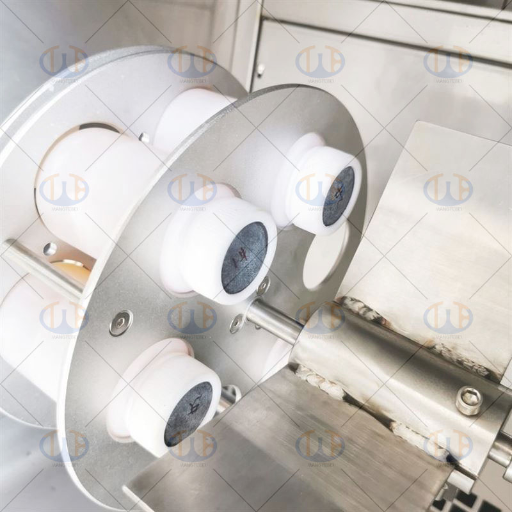
Footwear performance, for any particular activity, is associated with its quality as much as to the support, comfort, and durability it provides. An indicator of quality footwear is its ergonomic construction, which lessens stress on the feet, maintains alignment, and reduces the possibility of blistering and strains. Construction and selection of materials are vital for the shoe’s flexibility in adapting to different terrains and its geared for repetitive motion endurance. Apart from the above, good construction helps improve stability and energy efficiency for performance maintenance over periods of extended use.
What are the implications of quality assurance in footwear?
Grade CAA focuses on four levels of footwear marked as claims assurance penalties. This process offers both a reliability and a durability check. Testing ensures that any flaws that may arise from raw components, stitching, or construction techniques are dealt with prior to consumer interaction which improves customer satisfaction. This helps eliminate repairs and return procedures while strengthening the brand reputation due to the high-quality products consistently delivered. The use of modern technological processes like 3D scanning and computer-aided designs have sharpened quality checks and product footwear technologies. Strict compliance to safety, sustainability and enviromental impacts of doing business will guarantee a footwear technology that complies to the regulatory requirements. The outputs of a strong quality assurance system improves business and operational performance, reduces lifecycle costs, greatly impacts user experience, and enhances competition in the price-sensitive and fast changing marketplace.
How can quality control affect injury risk?
In domains where safety is a primary concern, effective quality control procedures are essential to reducing injury risks. To ensure safety verification of product components, quality control utilizes rigorous inspection procedures and testing of materials to confirm that every part meets predetermined safety thresholds and tolerances. Such as in automotive manufacturing, medical device production, or any other form of manufacturing industry, failure to follow precisely outlined procedures may result in critical operational malfunctions that may pose user risks. The use of sophisticated non-destructive testing (NDT), stringent dimensional assessments, and environmental simulations further help advanced quality control systems to identify prevailing issues early on in the production cycle. Also, SPC (statistical process control) systems are integrated to the system to track parameters that signal potential reliability risks improvement predictively. This mechanism aids in improving reliability and tracking recurring patterns that are associated with defect occurrence. Good quality control procedures taken will enhance operational safety, mitigate the chances of accidents, achieving compliance to ISO 9001 standards,8 and safeguarding the end users from avoidable dangers.
What is the Relationship Between Running Shoes and Injury Risk?
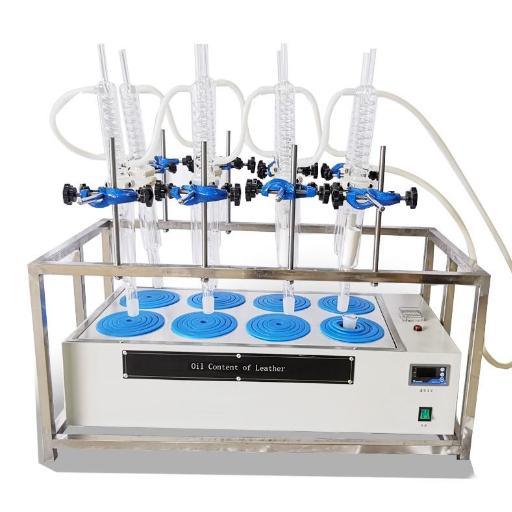
Joggings shoes are vital in providing the necessary support, cushioning, and stability during exercise in being a factor to injuring risk. Well-designed joggers’ shoes can assist in mitigating common injuries like plantar fasciitis caused by poorly aligned foot mechanics. However, the effectiveness of a specific shoe is largely based on individual considerations such as foot shape and running style. Shoes that no longer fit or are used for long period will add stress on the muscles thus injuring chances rise. Hence, it is crucial to minimize injury and maintain performance by choosing appropriate personal running shoes and replacing them regularly.
How do running biomechanics relate to footwear selection?
Prior to purchasing a running shoe, one must assess their gait along with running biomechanics to help them narrow down on their options. As gait entails numerous components, effective participants experiencing certain aspects of it can help fine-tune their approach. An individual’s stride length is crucial as it determines the shoe to be utilized along with the amount of shoe to weight ratio that the user should be dealing with. The same is the case with the pronation pattern as well as ground reaction force. For individuals suffering with excessive foot rolling (over pronation), motion control shoes can help provide the control needed for femoral motion. Moreover, the structural and dynamic features of a person’s arch—whether it is flat, normal, or high—greatly influences force distribution while running. This should inform choices in footwear. The precise assessment of biomechanics using gait analysis and pressure mapping has advanced with technology. This helps runners be provided with data-based solutions tailored to their specific biomechanical requirements, therefore optimizing performance.
What are the risk factors associated with overuse injuries?
Physically demanding activities, like construction requiring 4×4 inch holes, could result in micro damage to an athlete’s soft tissue if overseen. Failure to tolerate gym-driven microtrauma is usually the result of a damage trigger along with an intrusion signal squatting protocol. Repetitive overload injury usually brings a shift in the overall damage structure. Being harshly exposed to energy spending might actually occur if the biomechanical configuration results in misaligned posture, causing abnormal changes to the norm.
In the example of surfaces like concrete, limited shock absorption of running surfaces poses a risk of increased impact forces. Inadequate or worn shoes also do not provide proper cushioning or support leading to improper load distribution. Muscles that are weakened, low in flexibility, or previous injuries create intrinsic vulnerabilities while pose risks to overuse injuries. Bone density and tendon health also greatly weakens the body’s ability to endure repetitive stress. Long term damage can be avoided through optimal physical performance if risk factors are recognized and addressed.
What Testing Services are Available for Footwear Testing?
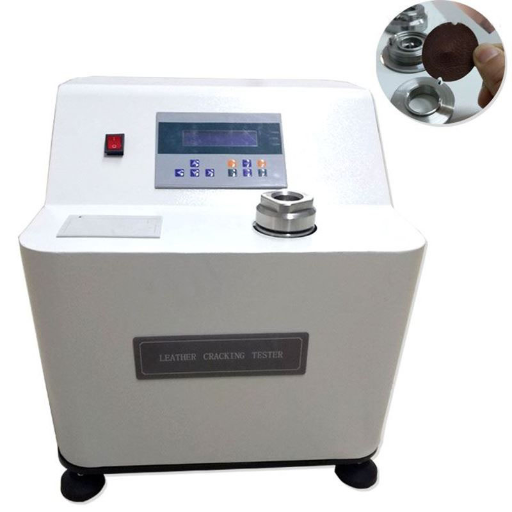
Shoes are tested for quality, safety, and performance. Testing includes:
- Durability Testing: Determines the extent of damage to a shoe after multiple uses and stress over time as well as abrasion resistance and sole bond strength.
- Slip Resistance Testing: Determines the safety of the shoe and footwear’s traction on different surfaces.
- Comfort and Fit Testing: Evaluation of consumers focused on their comfort while using shoes and the range of accessible flexibility in the shoes, pressure exerted on feet, and ease of cushioning.
- Material Analysis: Tests the quality and properties of materials with respect to tensile strength, water resistance and ability to allow vapors to pass through.
- Safety Compliance Testing: Ensures the tested item is in compliance with industry standards such as, chemical content of the shoe and the shoe’s flammability.
Manufacturers need these services because it gives critical data that helps them to come up with safe and better performing footwear.
What are the different types of testing services for shoes?
|
Type of Testing Service |
Purpose |
Key Parameters Measured |
|---|---|---|
|
Durability Testing |
Assess lifespan under repeated stress |
Abrasion resistance, tear strength |
|
Cushioning Performance Testing |
Evaluate shock absorption capabilities |
Energy return, impact force distribution |
|
Flexibility Testing |
Measure ease of bending during movement |
Flex angle, flexural stress |
|
Traction Testing |
Test grip and skid resistance |
Coefficient of friction, slip resistance |
|
Waterproofing and Breathability |
Assess moisture protection and airflow |
Water penetration, vapor permeability |
|
Dimensional Stability Testing |
Measure resistance to shape deformations |
Shrinkage, expansion rates |
|
Weight Testing |
Evaluate shoe weight distribution |
Total weight, balance consistency |
|
Thermal Resistance Testing |
Test performance in extreme temperatures |
Heat retention, thermal conductivity |
|
Chemical Resistance Testing |
Assess resistance to chemical exposure |
Solvent durability, material degradation |
|
Compression and Load Testing |
Measure response to compressive forces |
Load capacity, deformation ratio |
|
Torsional Rigidity Testing |
Evaluate resistance to twisting forces |
Torsion angle, structural integrity |
|
Wear and Tear Testing |
Simulate extended usage conditions |
Material fatigue, surface wear patterns |
|
User Comfort Analysis |
Assess subjective comfort during use |
Fit uniformity, pressure distribution |
|
Slip Resistance Testing |
Determine safety on various surfaces |
Anti-slip coefficient, traction levels |
|
Electrical Resistance Testing |
Evaluate conductivity properties |
Static discharge properties, resistivity |
How do systematic reviews inform testing practices?
By integrating rigorously obtained evidence from different studies, systematic reviews have synthesized high-quality evidence streams critical for polishing testing practices. These reviews compile, evaluate, and amalgamate information to set reliable benchmarks and standards, collecting evidence from various sources. Researchers, in particular, have access to aggregated findings and, therefore, can pinpoint vital elements, common obstacles, and established techniques pertinent to some tests. In safety testing of materials, for instance, systematic reviews are capable of ascertaining information about some materials and their durability and performance under certain conditions, which helps refine testing procedures. Therefore, such reviews can be treated as primary documents of reference when designing appropriate repeatable tests aligned to industry standards and regulatory frameworks.
What standards are used in the shoe industry for testing?
The shoe industry follows a set of global and local benchmarks for product quality, safety, and performance. One of the recognized frameworks is ISO 20344, which outlines evaluation test methods for footwear slip and impact protection, as well as water resistance. Also, ISO 17707 works on footwear flex resistance and guarantees its durability through repeated standard conditioned bends. For sports and performance shoes, traction performance tests are essential for wearer safety and are often done on multiple surfaces using ASTM F2913. Other proprietary metrics like SATRA testing standards are used for flexure, sole adhesion, abrasion resistance, and even for overall shoe fitting. These benchmarks are important not only for proper functionality, but also for aligning production with global markets and enhancing consumers’ trust and pride in the product’s reliability and its declared quality.
How Do Footwear Brands Approach Quality Control?
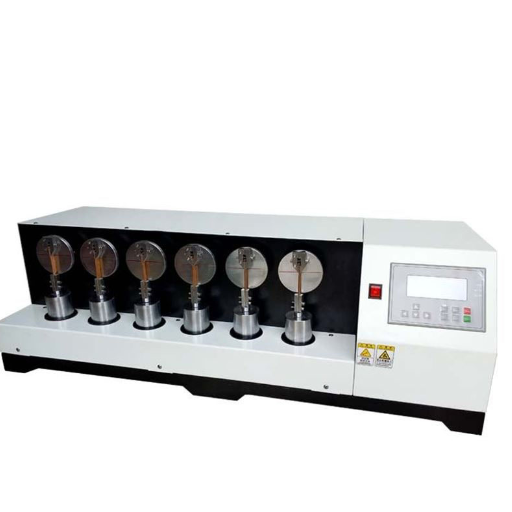
Quality control at footwear brands is achieved through advanced testing methods as well as standard operating procedures for each step of the production cycle. This usually includes raw material testing for consistency and strength, fitting and performance testing on prototypes, and final inspection for manufacturing defects. Also, brands often follow internationally accepted standards such as ISO for safety, reliability, and quality assurance which safeguards trust from consumers and reduced returns or complaints for faulty products.
What are the best practices in quality assurance for brands?
To achieve distinguished and dependable products, a brand needs to focus on effective quality assurance (QA) practices. One of the recommended best practices is the adoption of a comprehensive quality management system (QMS). Implementing a brand centered QMS which is based on industry standards, such as ISO 9001, enables creation of well-documented processes for easier realization of production, testing, and feedback integration which increases transparency and repeatability.
Another critical strategy is the use of data-driven quality controls. Automated inspection technologies using AI and ML offer real-time defect recognition alongside predictive maintenance, minimizing production holdups while boosting overall efficiency. Regular audits along with process reviews ensure existing QA practices adapt to changes in industry standards, demands, and expectations of the customers.
Moreover, training employees is a major aspect of quality assurance (QA). Teaching and refreshing teams on importance of compliance, quality measures, and new technology equips them to mitigate problems and resolves them proactively. Inclusion of customer feedback as well as historical data performance metrics ensures reputable adaptation and continuous alignment with market needs.
What future research is needed in the shoe selection process?
What Are the Common Issues Found in Footwear Testing?
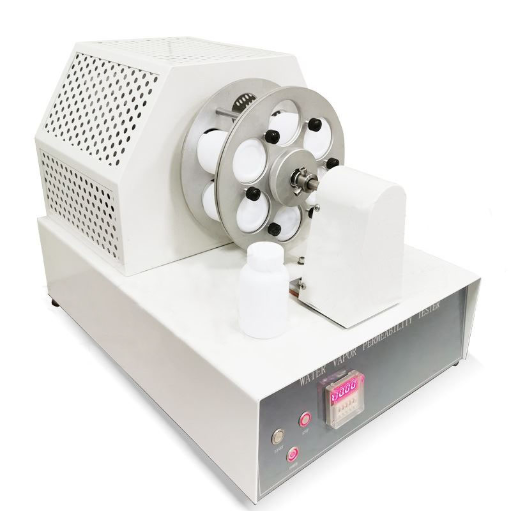
- Simulation of Real-World Conditions is Lacking: Wearing conditions such as weather, rugged surfaces, and long-term use are often not duplicated during testing.
- Lack of Diversity Considerations: Testing does not take into account differences in population demographics, which may include variations in foot shape, size, gait, and biomechanics, resulting in a non-diverse data set.
- Inaccurate Assessment of Material Wear Assessment for Non-use: Environmental exposure and prolonged use periods usually result in data gaps on material performance and hypothesis rigor.
- Insufficient Emphasis on Comfort Assessment: Functional requirements are often placed in the primary focus while subjective evaluations of comfort like cushioning and fitting are rigidly ignored.
- Deficiency in Developing Consistent Protocols: There is a lack standard protocols which can be used by all companies for the same tests leading to more confusion on the outcome and result.
Proper footwear inclusivity and designs that improve performance hinges primarily upon accurate examinations and assessments which means addressing the highlighted issues is critical.
What are the most frequently encountered quality issues?
Footwear quality issues commonly result from a lack of durability in materials, wear and tear on the designs, and lapses in consistent production. One common problem is that the outsoles wear off earlier than expected, which can shatter the shoe’s performance during its lifecycle. Outsole and midsole layering’s inadequate adhesion resulting enduring structural failures is another common problem recurring. Cushioning that is inadequate, poor insoles, or insufficient cushioning is yet another persisting problem to make these shoes more comfortable. This would encourage extended usage for the users while decreasing fatigue or injury risk.
Footwear aesthetics are also severely marred by features such as patchy stitching or pattern misalignment even though they should be considered to improve customer perception of product quality. Other single, standalone issues that can damage customer relationships are severe alterability within a brand’s or region’s size metric that lead to mistrust in ill fitting shoes. These problems are compounded in synthesizing the final product by supply chain problems pertaining to the raw materials where uncontrolled inconsistencies in the material directly affects the end vanity of footwear. Achieving the desired outcomes calls for thorough material analysis, cutting edge machining processes, and uncompromising precision on quality standards aimed at comfort and client reliability.
How do common issues affect consumer choices?
Problems like inconsistent sizing and differences in quality put a negative impact on consumer behavior. Research shows that brands face an aggressive brand switch from customers over recurring issues like poor fitting, lack of durability and so on. In addition, reports suggest that around 30% of online apparel and footwear orders are returned and inaccurate sizing takes the blame most of the time. These negative experiences erode trust and decrease the chance of repeat purchases which weakens brand loyalty. Companies need to adopt strict policies with open communication, meticulously enforce matching standards, and uniformity across all product lines to fix these problems. Addressing these issues enables businesses to increase customer retention and strengthen their trust with consumers.
Reference Sources
1. Consumers’ Purchase Intention Toward Ergonomic Footwear in Malaysia: This study explored factors influencing the purchase of ergonomic footwear, focusing on utilitarian consumption, perceived value, and trust.
2. Factors Affecting Brand Loyalty in the Footwear Industry – A Study of Ludhiana District: The study identified 12 significant factors affecting brand loyalty, including pricing strategies, customer satisfaction, and product reliability.
3. Footwear Sector in India: A Role of Advanced Technologies: This paper reviewed the impact of advanced technologies on the footwear sector, emphasizing improvements in design, production, and testing techniques.
Frequently Asked Questions (FAQs)
Q: What are the primary factors that affect footwear testing for runners?
A: The primary factors that affect footwear testing include the type of footwear, running conditions, running mechanics, and the specific needs of the lower extremity of the runner, such as their running velocity and range of motion.
Q: How do shoe design and type influence running-related injuries?
A: Shoe design and type, such as neutral shoes or minimalist shoes, can significantly influence the risk of injury. For instance, certain designs may provide better support for rearfoot eversion or help mitigate the impact forces that contribute to running injuries.
Q: What is the effect of running velocity on footwear performance?
A: Running velocity affects footwear performance by altering the demands on the shoe’s cushioning and support features. Higher speeds may require shoes that offer more stability and better energy return to maintain running economy and reduce the risk of injury.
Q: How does the footwear market size relate to running injuries?
A: The footwear market size is influenced by the demand for specific types of shoes that address running injuries. As awareness of the factors that influence running-related injuries grows, shoe manufacturers may respond by designing products specifically targeted at reducing the risk of injury among recreational and distance runners.
Q: What role do female runners play in the footwear testing process?
A: Female runners play a crucial role in the footwear testing process as their biomechanics and lower limb characteristics can differ significantly from male runners. This variation necessitates tailored footwear designs to address their unique needs and reduce the risk of injury.
Q: How does treadmill running differ from outdoor running in terms of footwear testing?
A: Treadmill running often provides a controlled environment, allowing for quantitative analysis of running mechanics and footwear performance. However, outdoor running involves more variable conditions, which can impact the effectiveness of certain shoe designs and their ability to prevent running injuries.
Q: What factors influence the design of shoes with minimal cushioning?
A: Factors that influence the design of shoes with minimal cushioning include the desired running mechanics, the preference for a more natural feel, and the need to support the foot’s natural movement while still providing adequate protection against impact forces to lower extremities.
Q: How can understanding the factors affecting footwear testing improve running economy?
A: Understanding the factors affecting footwear testing can help in selecting appropriate shoes that enhance running economy by optimizing energy return, reducing weight, and ensuring proper fit and function, ultimately lowering the risk of injury and improving performance.






